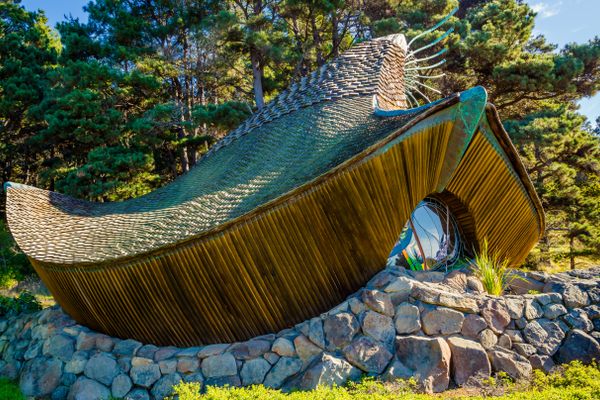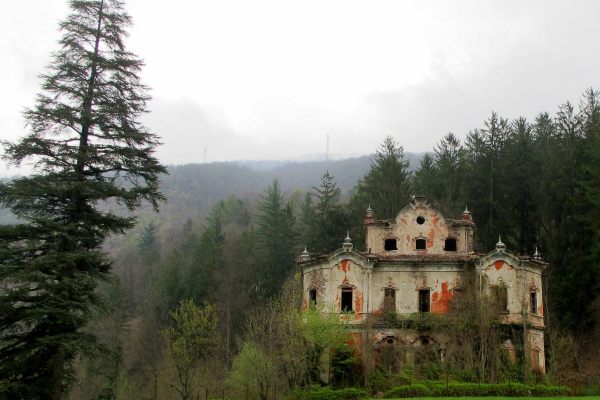For Rent: Indiana’s Iconic, But Languishing, House of Tomorrow
There’s a catch: You have to be willing to restore the futuristic structure.

In the newly designated Indiana Dunes National Park, the steel circular framework of a building covered in housewrap is sure to catch your eye. Known as the House of Tomorrow, this structure was once an iconic attempt at futuristic architecture, during a period when hope for a better tomorrow was all most Americans had. However, these days it’s just another dilapidated building. But not for long, if the nonprofit Indiana Landmarks has its way. The organization is offering a 50-year sublease to a skilled restorer who can bring the house back to life.
Designed by the architect George Fred Keck, the building was first displayed at the Chicago World’s Fair of 1933-1934, also known as the Century of Progress Exposition. The house itself was complete with floor-to-ceiling glass walls and finished with amenities that were very technologically advanced for the time, including an iceless refrigerator, central air conditioning, the first General Electric dishwasher, a push-button garage door, and an airplane hangar. It was truly a modern marvel and, as noted in Chicago Magazine, a precursor to more famous glass houses by Philip Johnson and Mies van der Rohe.
After being viewed by nearly 39 million people in Chicago, the House of Tomorrow, along with several other futuristic dwellings from the fair, was shipped across Lake Michigan and stored along the Indiana sand dunes by Robert Bartlett, a Chicago developer who hoped to turn the homes into a trendy vacation spot. But it didn’t happen.

There the buildings sat, fading from memory until 2000, when Indiana Landmarks began leasing them from the National Park Service, which acquired what was then Indiana Dunes National Lakeshore during the 1960s and 1970s. In turn, the nonprofit was able to sublease the homes to tenants willing to restore them to their original states. Now they are looking for someone to do the same with the House of Tomorrow.
Rebuilding a house that was once the poster child for innovation won’t be easy or cheap. Indiana Landmarks estimates the project will cost somewhere between $2.5 and $3 million to complete. For the 50-year sublease, the organization is searching for someone who has done this type of extensive restoration work in the past and has a strong desire to restore history. “It’s not just the matter of money,” says Todd Zeiger, director of Indiana Landmarks’s northern regional office. “It’s really somebody that has a passion for historical preservation and wants to have a very unique opportunity to restore a house that’s really a one-off.”
Whoever wins the sublease must commit to the home remaining a single-family dwelling, cannot sublease it, and must open the home to tours once a year, but Zeiger says that the new tenants can add their own stylings to fit their preferences. Indiana Landmarks is hoping restoration can begin as early as September.
All the other houses left at dunes—the Florida Tropical House, the Cypress Log Cabin, the Armco-Ferro House, and the Wieboldt-Rostone House—have been returned to their former glory. All that remains is the House of Tomorrow and someone willing to take on the challenge.













Follow us on Twitter to get the latest on the world's hidden wonders.
Like us on Facebook to get the latest on the world's hidden wonders.
Follow us on Twitter Like us on Facebook